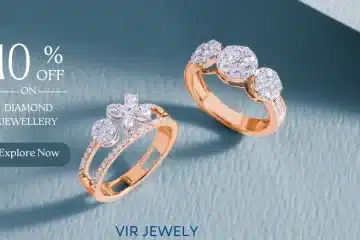How to choose the hairdryer?
To buy a hair dryer that is really useful and will last many years, you need to make sure it has the features we need. Pay particular attention to the type of use made of the appliance, safety, good performance, low consumption and noise and accessories. Here’s everything you need to know.
Who among us doesn’t want to have shiny, soft and perfectly styled hair all the time? Buying the right hairdryer is one of the fundamental aspects to be able to obtain a good result. But which features should be taken into consideration?
What is the most suitable hair dryer for different needs?
Buying a hairdryer that perfectly meets our needs and that, at the same time, lasts a long time, ensuring consistently high performances, is certainly not easy: there are many factors to evaluate and aspects to pay attention to.
For example, there are those looking for a product that follows us everywhere (in the gym and on the road) and wants a compact, resistant and perhaps foldable product. On the other hand, there are those who would like a professional result and are attracted to special functions and accessories. If it is true that there is no product for all occasions, it is certainly possible to evaluate some important things before each purchase: safety, good performance, low fuel consumption and noise, accessories.
If you plan to use the hairdryer for elaborate hairstyles, if you have thick and long hair and therefore important usage times, the weight and ergonomics of the product are crucial aspects to consider. The ideal would be to be able to hold the device in the shop to be aware of aspects such as weight distribution or if the positioning of the buttons is practical. Without forgetting the length of the cable, to use the hairdryer at will, even if the drying station is not close to the socket.
If, on the other hand, you have short or thin hair, the needs will be less, the important thing will be to be able to adjust the temperature of the device.
There is something for all tastes, which is why it is important to understand, before purchasing, which hair dryer is ideal for us. Let’s see what to consider and why.
How the hairdryer works:
Before delving into the main characteristics that a hairdryer must have and which must be evaluated when you decide to buy one, it is good to know how it works.
Most hair dryers use a fan that blows the air at room temperature through a resistance, producing a wind of hot air that effectively dries the hair. This resistance is generally a wire of conductive material that is heated by the passage of current, similar to the filament of an old light bulb.
Many products today use ceramic components, which are able to deliver heat instantaneously and more evenly than wire heating elements. Most modern hairdryers have a button that turns off the heat jet and supplies air at room temperature, in order to fix the style and reduce frizz. Many appliances also boast functions or accessories with polishing, anti-frizz and volumizing properties.
In any case, for all types of hair dryers, it is good to evaluate a series of elements. Let’s see which ones.
Power and flow rate of air:
The power of a hairdryer is a workhorse of manufacturers who tend to convey the message that the higher the power, the better the performance. If it is true that the higher the declared power, the greater the consumption, the relationship between power and efficacy is not as valid, i.e. the time required to dry the hair: products with powers ranging from a minimum of 1700 W to a maximum. of 2000 W meet all needs. Travel products generally have lower powers (1000-1600 W) while professional hairdryers reach up to 2500 W.
But what does the drying effectiveness depend on? From the correct combination of temperatures and air flow rate, that is, the amount of air that a hairdryer is able to push outwards in a given period of time. Damaging the hair due to overexposure to heat is easy, while high flows allow quick drying without damage: for fine hair it is better to prefer high air flows at moderate temperatures, for thick hair or hair with a thick and thick stem, instead, they can serve higher temperatures.
An effective hairdryer must therefore be able to quickly produce an abundant jet of hot air. This value is generally measured in cubic meters per hour (declared values generally vary between 65 and 80 m3 / h), although many manufacturers choose to express only the speed of the jet in km per hour (up to 208 km / h). The parameter can vary a lot: often, for travel products, the flow values are low while, in general, they are good or excellent for products with a domestic or professional vocation.
Motor:
Three types of motors can be found inside a hairdryer:
B.C. The AC motor is, to date, the most widespread type. Generally reliable (with a useful life of over 2000 hours) it is significantly lower in price than products with an EC motor.
A.D. Products equipped with a DC motor (working with direct current) tend to have a shorter life span (approximately 1200 hours), but a more compact weight and dimensions, making them easier to handle.
EC. The most innovative products have an EC motor (which stands for ‘Electronic Control’): while the AC motor is powered directly by the socket current and the DC motor needs a simple converter, motors equipped with electronic control should combine the advantages of both. The price of this type of equipment is very high.
One question that arises is whether the power and longevity claimed by the manufacturers, for products with an EC engine, drive prices up. The justification for the higher cost of these products lies in the greater reliability claimed by the manufacturers (up to 10,000 hours, which is about 5 times greater than the professional AC motor). However, it must be borne in mind that the electronic control system is a further complication and that the reliability of an engine is due to the materials used and the care taken in the project. Furthermore, in our tests, we assumed a use of 400 hours, equal to about 8 years of domestic life, so for non-professional use, a product that lasts 2,000 hours would follow us for 40 years!


















